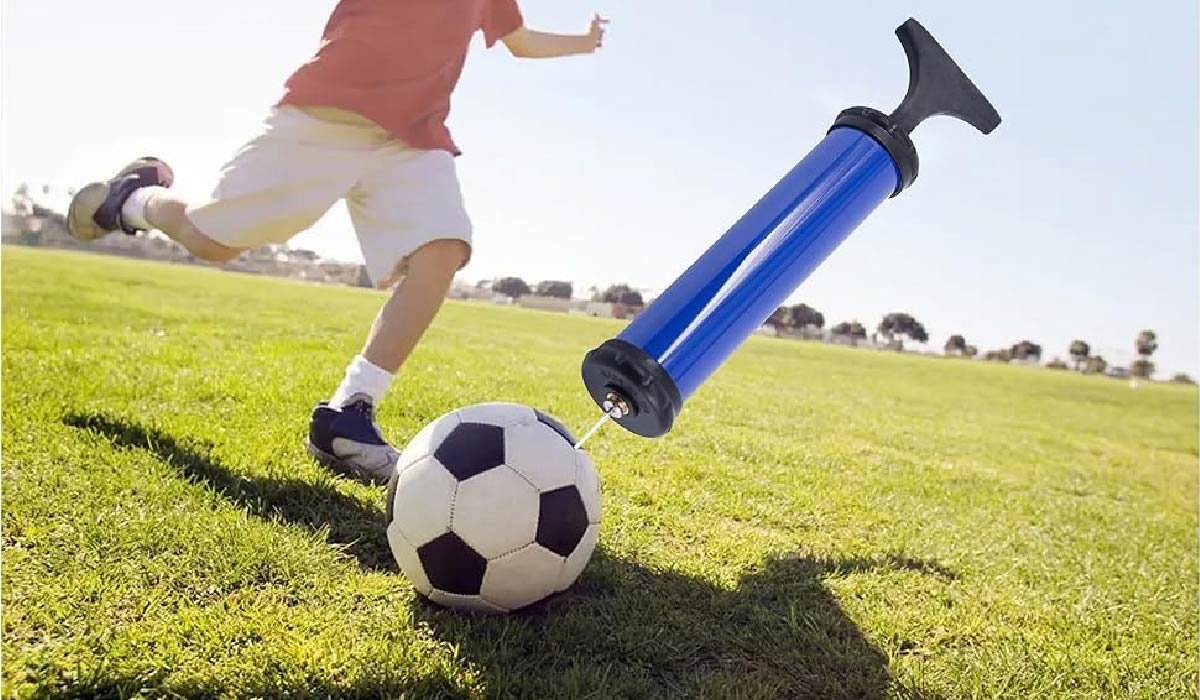Business
Stay Game-Ready: The Essential Guide to Ball Inflation Pumps

For athletes and sports enthusiasts alike, the condition of the sports equipment is crucial for peak performance. Whether it’s football, basketball, volleyball, or any other sport that relies on inflatable balls, maintaining the proper air pressure is paramount for optimal gameplay. In this humble guide, we delve into the essential world of ball inflation pumps, an often-overlooked yet vital component of any sports kit.
Understanding the Importance of Proper Ball Inflation
Maintaining the correct air pressure in sports balls not only ensures the integrity of the game but also protects the lifespan of the ball itself. Underinflated balls can be more difficult to control, potentially affecting the outcome of a game, while overinflated balls may lead to inconsistent performance or even damage. Thus, having a reliable ball pump is indispensable for anyone serious about their sport.
The Various Types of Ball Inflation Pumps
When it comes to inflating sports balls, there is a variety of pumps on the market, each serving a specific purpose. Manual hand pumps are a compact and portable option, ideal for quick top-ups before a game. Foot pumps, on the other hand, offer a more comfortable alternative, minimizing arm fatigue. Lastly, electric pumps provide a quick and effortless inflation experience, albeit often at a less portable and higher price point.
Choosing the Right Ball Pump for Your Needs
Choosing the correct ball pump depends on several factors: the type of balls you most commonly use, the frequency of use, and your setting. For instance, coaches or teams might benefit from electric pumps due to the high volume of balls needing regular inflation. Conversely, individual athletes might prefer manual pumps for their ease of transportation.
Quality should also influence your selection, as durable pumps will withstand the wear and tear of regular use, particularly in outdoor or rugged conditions. Moreover, versatility is a factor; some pumps come with multiple attachments to accommodate different ball sizes and valve types.
The Role of Pressure Gauges
An often neglected but essential sidekick to a good ball pump is an accurate pressure gauge. Using a gauge eliminates the guesswork from inflation, allowing precise adjustments to match the recommended pressure levels for each type of ball. Overlooking the importance of a pressure gauge can lead to improper inflation, so incorporating one into your routine will safeguard against mistakes.
How to Inflate a Ball Correctly
Correctly inflating a ball can be a simple yet meticulous process. Always start by finding the prescribed psi level, typically noted on the ball itself. Then, use your chosen pump, ideally paired with a pressure gauge, to fill the ball gradually. If using a manual pump, it’s often best to use consistent, measured strokes. Once you reach the desired pressure, remove the pump and inspect the ball to ensure it handles as expected.
Maintenance and Care for Your Ball Pump
Just as you would care for the balls in your sports arsenal, your ball pump requires regular maintenance to ensure longevity. For manual pumps, this means occasionally lubricating the piston, while electric pumps may require battery changes or charging. Keep your pump clean and free from dirt and sand that could interfere with the valve system, and store it in a cool, dry place after use.
It is also advisable to keep spare needles and valves on hand, as these can bend or break during use and render your pump ineffective. Proper care ensures the pump’s reliability when you need it most – right before a big game or in the midst of a training session.
Transportation and Storage of Inflation Pumps
Depending on the design and size of your ball pump, transportation and storage will vary. Manual hand pumps are easily stowed in any equipment bag, though they should be kept in a protective sleeve to prevent damage to the needle. Larger foot or electric pumps may require more space and robust storage solutions to protect against impacts and elements during travel.
Common Misconceptions About Ball Inflation
A myth often circulated in sports circles is that the inflation of the ball could significantly alter a player’s techniques or skill level. While it is true that ball handling can feel different depending on air pressure, fundamentally, skills and techniques remain player-dependent. Proper inflation ensures a fair playing field and allows each athlete to showcase their abilities unhindered by equipment faults.
The Impact of Temperature on Ball Pressure
Temperature fluctuations can have a significant impact on ball pressure. Cold environments can cause the air inside a ball to contract, leading to underinflation, while warm climates may expand the air, risking overinflation. It is crucial, therefore, to adjust the ball’s pressure to account for these changes, especially before outdoor games or when transitioning between different playing environments.
In conclusion, having a reliable ball pump and knowing how to use it can make a considerable difference in sports. It’s about more than just keeping balls properly inflated; it’s about ensuring that every game played is fair, consistent, and showcases the true skill of the athletes involved. Invest in a quality ball pump, understand its maintenance, and it will serve you well through countless games and training sessions—keeping you, and your gear, always game-ready.
-

 Celebrity1 year ago
Celebrity1 year agoWho Is Jennifer Rauchet?: All You Need To Know About Pete Hegseth’s Wife
-

 Celebrity1 year ago
Celebrity1 year agoWho Is Mindy Jennings?: All You Need To Know About Ken Jennings Wife
-

 Celebrity1 year ago
Celebrity1 year agoWho Is Enrica Cenzatti?: The Untold Story of Andrea Bocelli’s Ex-Wife
-

 Celebrity1 year ago
Celebrity1 year agoWho Is Klarissa Munz: The Untold Story of Freddie Highmore’s Wife
















